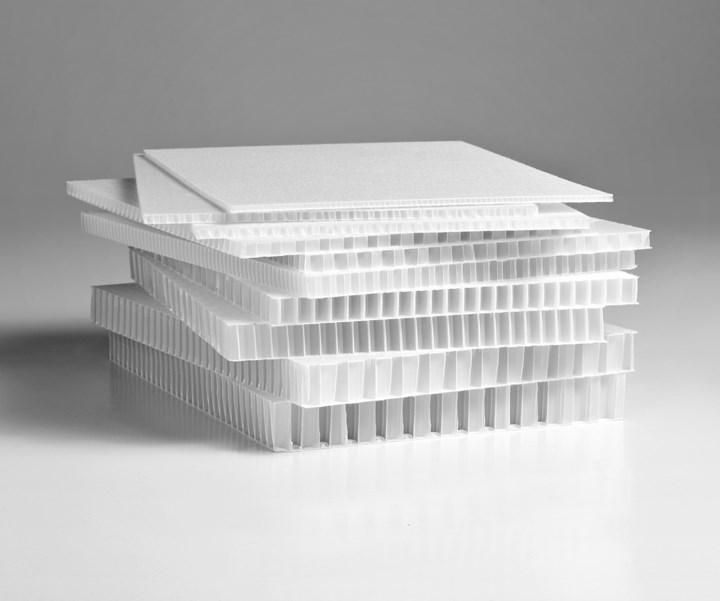EconCore evolves thermoplastic, recycled honeycomb core materials
EconCore’s latest research is focused on high-performance honeycombs and recycled polyethylene terephthalate (RPET) honeycomb technology.

Source | EconCore
Editor’s note: CompositesWorld received several new product and technology announcements ahead of JEC World 2020, which had been scheduled for March 3-5. Although that exhibition was postponed to May, CW is now publishing the announcements we received. This is one of them.
At JEC World 2020, EconCore (Leuven, Belgium) is celebrating recent announcements of new licensees for its lightweight thermoplastic honeycomb core technology, as well as new evolutions in the company’s high-performance honeycombs and recycled polyethylene terephthalate (RPET) honeycomb technology.
The patented ThermHex technology offers a cost-efficient, continuous, high-volume process for lightweight thermoplastic honeycomb cores that can be directly laminated into sandwich panels within an in-line production process. The technology fits applications across end market sectors, including transport, automotive, packaging and construction.
EconCore has recently announced that it has signed license agreements with two new companies. The Japanese automotive Tier one supplier Kotobukiya Fronte currently uses the honeycomb technology for automotive interiors. By producing rigid panels, integrated with in-line lamination of nonwoven and carpet surface layers, it enables a more efficient production process of finished automotive interior elements, featuring enhanced acoustic performance due to the cellular thermoplastic honeycomb structure. The lightweight honeycomb panels can also be converted into relatively complex-shaped parts with a short compression molding process cycle.
The other license agreement is with a global advanced technical textiles company, Low & Bonar, who uses the honeycomb technology as an underlay for hard surface flooring. It is created by sandwiching the thermoplastic honeycomb core with a nonwoven material. This gives the product a high compressive strength, as well as excellent acoustic absorption and insulation properties, explicitly desired by the building industry. Furthermore, due to the adaptations in the EconCore’s production process, the underlay product is deliverable on rolls, enabling easy storage and most of all, a swift installation at the residential and industrial building site.
The company’s new research and development is focused on high-performance thermoplastic (HPT) as well as RPET honeycombs, targeted at applications in automotive, infrastructure, transportation and aerospace markets.
Related Content
-
The lessons behind OceanGate
Carbon fiber composites faced much criticism in the wake of the OceanGate submersible accident. CW’s publisher Jeff Sloan explains that it’s not that simple.
-
Plant tour: Joby Aviation, Marina, Calif., U.S.
As the advanced air mobility market begins to take shape, market leader Joby Aviation works to industrialize composites manufacturing for its first-generation, composites-intensive, all-electric air taxi.
-
Sulapac introduces Sulapac Flow 1.7 to replace PLA, ABS and PP in FDM, FGF
Available as filament and granules for extrusion, new wood composite matches properties yet is compostable, eliminates microplastics and reduces carbon footprint.

.jpg;width=70;height=70;mode=crop)













